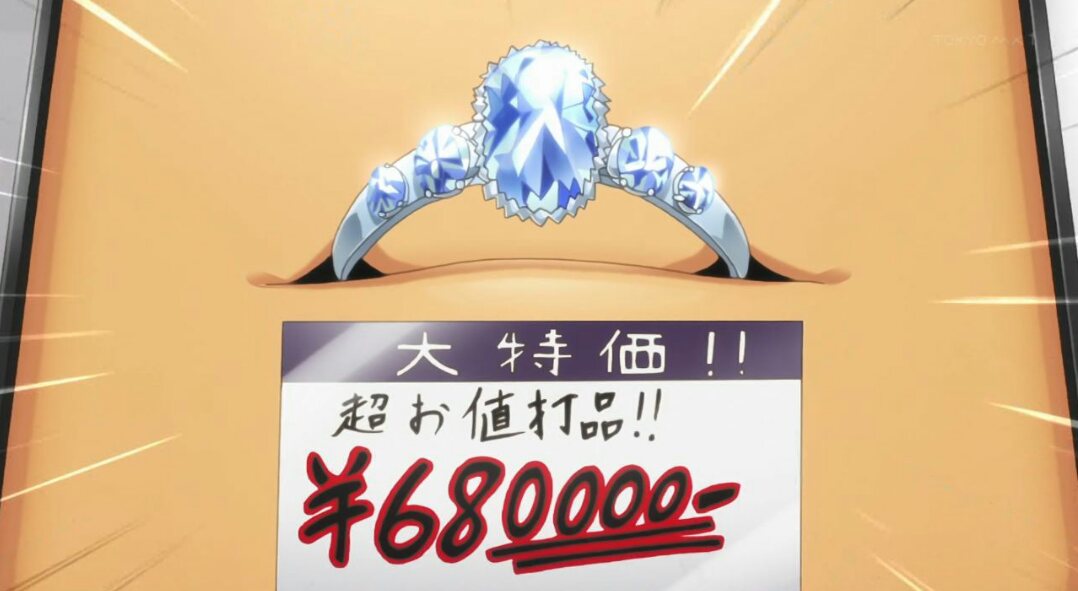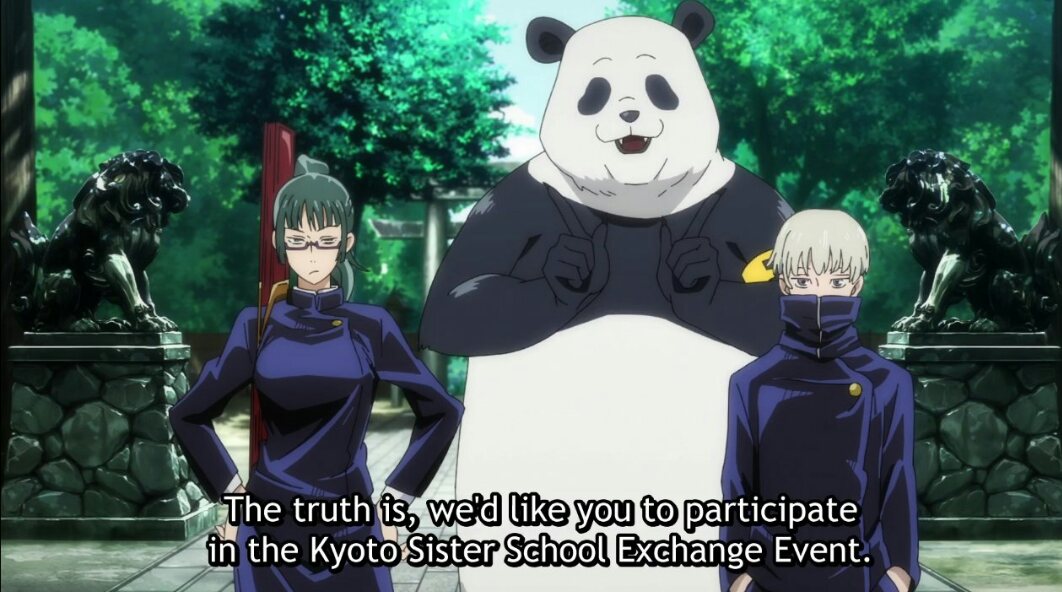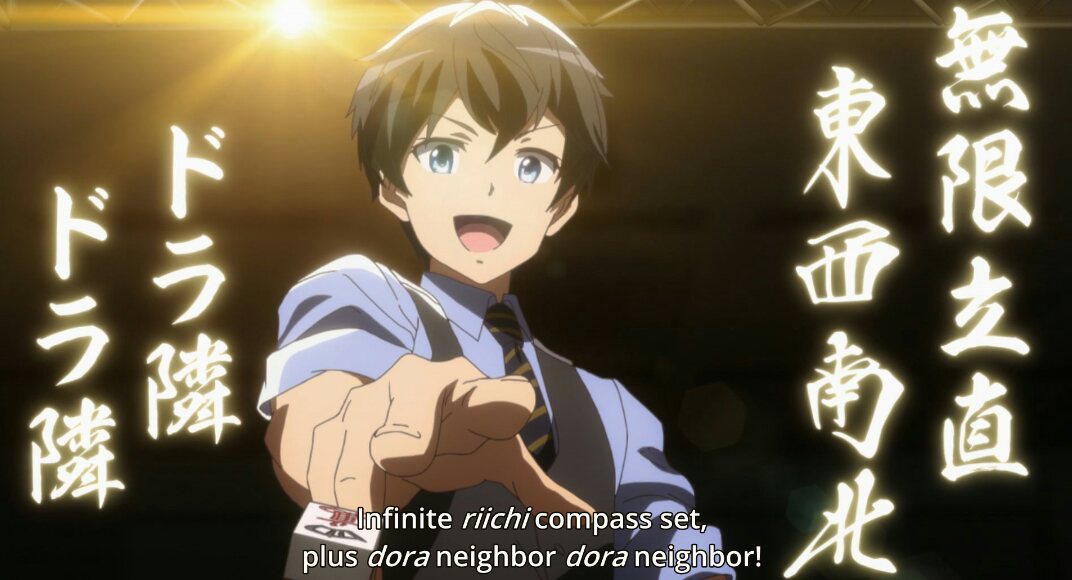SEASONAL PRATTLE
We’re now just stacking good episodes on top of good episodes in Munou na Nana, and it’s starting to feel a little underrated in the bigger picture of Fall’s catalog. This series is just flat out good at maneuvering Nana in its narrative to the point it’s become fairly easy to invest in. Part of the reason behind that is the level of writing concerning her is elastic enough to bounce more crucial plot beats with little hassle rather than drag them down – being noticeably effective with setting up and landing cliffhangers. And the other part is there’s enough of a curve in its storytelling on a whole to keep it consistently interesting: Tsunekichi was a more deceptive character in motion than on paper, and overcoming his power given the parameters by no means was a cakewalk. More ingenuity was needed for this week’s kill, and it’s nice to see Nana live up to that.
Akudama Drive (4)
“Blissfully floating through a heap of nicely structured, dynamic sequences and well-timed cheeky character interplay”
Akudama Drive’s streak of being an immediately rewarding action piece remains intact for another week. This show just has such a good grasp of its own goals and strengths that it never slips off the rails into disappointing territory – blissfully floating through a heap of nicely structured, dynamic sequences and well-timed cheeky character interplay as it wraps stage 2 of the Shinkansen raid mission. And the overarching narrative appears to be heating up too! It’s no secret that Akudama Drive has been pretty thin in terms of story, and the lack of support there is the show’s biggest conventional weakness. However, this showing’s recent cat reveal compounded with the Kanto / Kansai conflict lends some needed optimism that it could actually become an asset. These next two episodes should be very telling.

Majo no Tabitabi (5)
“Secured a constant level of framing where the audience can simply understand the moment”
Majo no Tabitabi experienced a modest turnout, doing its part to be tonally and structurally efficient just to the extent that it makes it across the finish line in fine fashion. Most noticeably, episode five is short on real forward momentum, but its particular sensei-student slant is sturdy enough to mask that. This is mainly due to just how inherently natural Elaina and Fran’s interactions are at capturing satisfaction and comfort. Portraying how one character can be truly enjoying another’s presence in a relaxing way often necessitates more explicit narration to detail what the character feels, but Majo no Tabitabi secured a constant level of framing where the audience can simply understand the moment – not really needing further effort to etch the situation. For that, it’s easy to see Elaina is genuinely enjoying both her personal reunion and her time spent teaching as this chapter of her journey closes without any particular twist or thorny lesson. Majo no Tabitabi’s heart is just purely in a friendly place here and that’s worth embracing just as much as its darker offerings.

Adachi to Shimamura (4)
“The level of acuity here is surprisingly a rollercoaster”
Reasonable showing from Adachi to Shimamura, not being as convincingly poignant or consistently graceful as prior episodes but by no means coming off as a total clunker either. The content we get in episode four is essentially a workmanlike effort, presenting the necessary groundwork for more important narrative initiatives down the road with little window dressing or flair. Piling on that, the level of acuity here is surprisingly a rollercoaster – being high on Shimamura’s inner monologues, but gradually coming down with its conversation on motherhood and taking yet another drop off during karaoke, which devolved into a more typical anime moment despite having a good opportunity to be evocative. Adachi coming to terms with her feelings in the end is nice, but similar to most of four’s bigger strokes, simply lacks the vision and energy to live up to the gravity of the moment.

Tonikaku Kawaii (5)
“More or less just catering to the most idealistic regions of its genre space and submitting nothing else”
This was a cute showing from Tonikaku Kawaii’s latest, displaying a nice amount of confidence when it comes to its romantic material. Unfortunately, though, that’s pretty much all it had going for it. Episode five simply fails to be magnetic – more or less just catering to the most idealistic regions of its genre space and submitting nothing else. The jokes offered are a roulette wheel when it comes to generating genuine laughs and there’s no real opposition or firm dramatic spine here, thus, this episode centered around purchasing a wedding ring is just about as entertaining and intriguingly written as it sounds on paper – shaking out to be a straightforward, passable effort that’s not particularly commendable in any constructive way. Sentiments like “cute” and “wholesome” are welcomed in their measured application, but fueling your entire episode on it will only get you so far.

Jujutsu Kaisen (5)
“Would certainly be nice if this show was smooth enough in shifting moods to support an episode like this”
A seesaw like performance from Jujutsu Kaisen this time around, managing to be fair for the most part when the dust settles but still showing some wounds in the process. On one hand, Fushiguro vs Sukuna is solid, boasting the type of vision and craft polish you would expect from MAPPA’s unit on this project. However, on the other hand, the events post-Yuuji’s death are just laughably detached – a cluster of slapstick beats, tone-deaf writing, and skimpy character introductions that eventually work their way into loosely setting the floor for an upcoming tournament. It would certainly be nice if this show was smooth enough in shifting moods to support an episode like this, but it’s not, and so this was a pretty jagged twenty minutes.

Kamisama ni Natta Hi (4)
“You have to soak in a full portion of vapid, mahjong themed storytelling”
Kamisama ni Natta Hi returns, once again firmly meeting expectations by giving an episode that’s just as talented at wasting time as it is being an unfunny clump of unremarkable scripting. Apparently, this series’ idea of progression in the plot is to make any relevant content about two minutes or so in length, drown its surroundings in nonsensical, limply composed scenario writing, and then fill whatever gaps and remaining time with Hina complaining about names or some other expired character antics that the dart our creators through at a board landed on. So while episode four gives some snippets of the somewhat vague, tech laced scheming that’s been “subtlety” playing out in the background and that one can only assume will be revealed as the real driving force behind this tiresome show – you have to soak in a full portion of vapid, mahjong themed storytelling along with it. At some point you have to ask yourself, is this worth it?

Kimi to Boku no Saigo no Senjou, Aruiwa Sekai ga Hajimaru Seisen (4)
“Discovering crisp new ways to repackage the same ragged formula of forced encounters and related cliches”
We’re now a month’s worth of episodes into Kimisen and the show is making strides, discovering crisp new ways to repackage the same ragged formula of forced encounters and related cliches to viewers as if it were fresh. With that said, episode four stays on schedule with the series’ current expectations: Outside of the small handful of minutes Kimisen tries to be narratively relevant here, putting down the railroad tracks for our unit’s next mission through stale discourse, this is yet another scantily valuable watch that throws you into the ever-growing cesspool of trite character acting and uninspired plotting – centered on two warring factions that still aren’t nearly developed enough to actually care about, and lead through the soggy exploits of an MC that’s even less interesting. At best, Kimisen is a marginal time waster this week.

